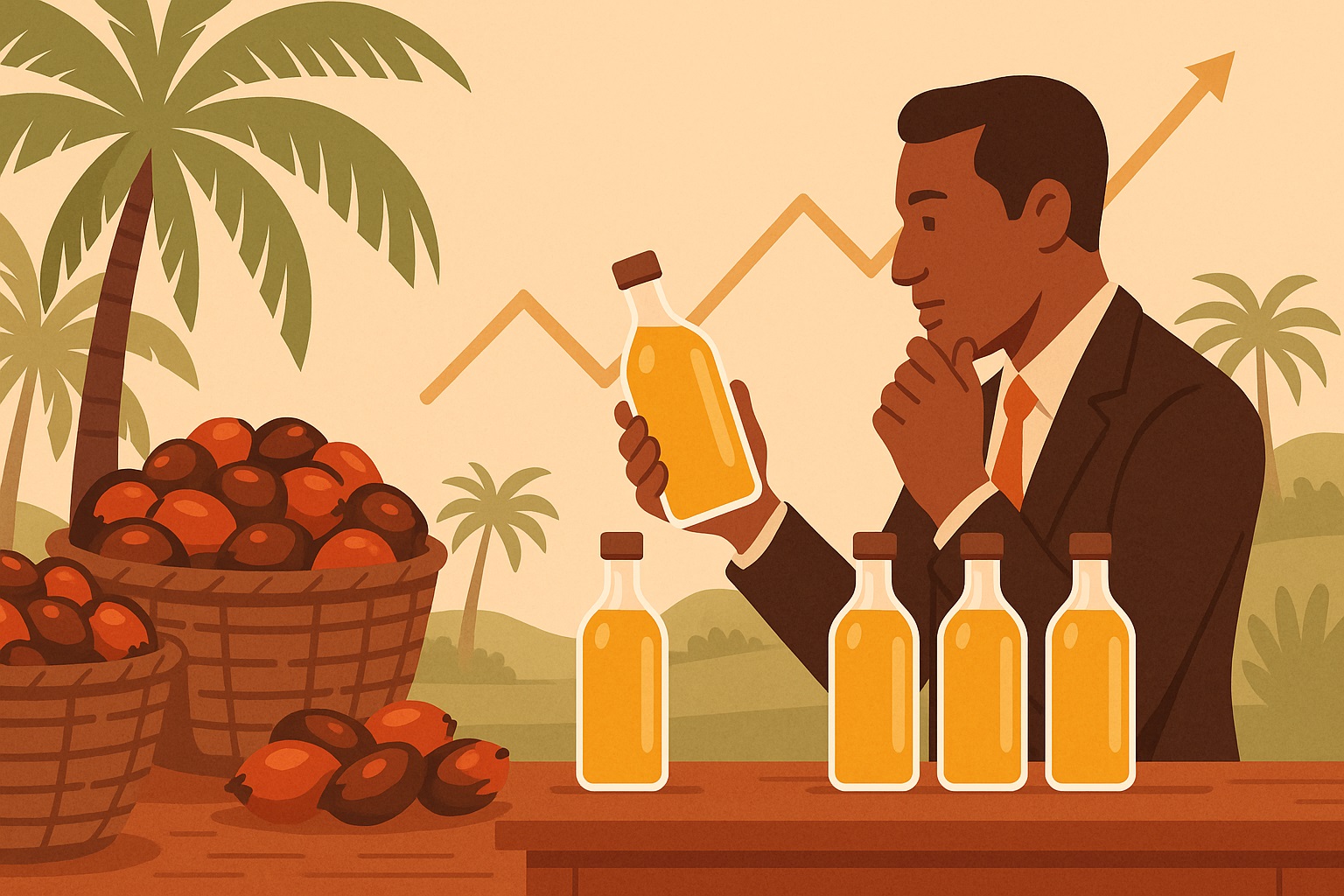Whether you’re selling fashion in Lagos, gadgets in Abuja, or food in Enugu, a sales funnel is your secret weapon to turn strangers into loyal customers without breaking a sweat. Think of it like a well-oiled okada that carries your customers from “Who be this?” to “Take my money!” This guide will break it down like we’re gisting over a cold bottle of Gulder, showing you how to build a sales funnel that works on autopilot, even with Nigeria’s unique challenges.
What Is a Sales Funnel and Why Do You Need One?
A sales funnel is the journey your customers take from hearing about your business to buying from you and coming back for more. It’s like leading someone from the market gate to your shop, showing them your best products, and closing the deal. In Nigeria, where trust is hard-earned and attention is scarce, a sales funnel helps you:
- Attract the right customers.
- Build trust with them.
- Make sales without chasing them 24/7.
- Keep them coming back like they’re hooked on your jollof.
Without a funnel, you’re just shouting on Instagram or WhatsApp, hoping someone notices. A funnel works like a system, guiding people step-by-step to buy from you, even while you sleep. Let’s dive into how to build one that converts like magic.
Step 1: Know Your Audience Like Your Best Friend
In Nigeria, business is personal. You can’t sell to people you don’t understand. Start by asking:
- Who are my customers? (Students, professionals, aunties, etc.)
- What problems do they have? (No time, no money, no trust.)
- Where do they hang out? (Instagram, WhatsApp, church, markets.)
For example, if you sell fitness gear, your audience might be young professionals in Lagos who want to stay fit but are too busy. Their problem? No time for the gym. Your solution? Home workout equipment they can use anytime. Knowing this helps you craft a funnel that speaks their language.
Pro tip: Talk to your customers directly. Ask them what they want at your shop, on WhatsApp, or via DMs. Nigerians love to gist, so use that to learn what makes them tick.
Step 2: Attract Attention with a Magnet
The top of your funnel is about grabbing attention. In Naija, where everyone is hustling, you need a “lead magnet” to pull people in. This is a free or low-cost offer that makes people say, “Omo, I need this!” Examples:
- A free e-book (e.g., “10 Ways to Style Ankara on a Budget” for a fashion business).
- A discount code for their first purchase.
- A free consultation or trial (e.g., “15-Minute Business Coaching Call”).
- A quiz or checklist (e.g., “Is Your Skin Ready for Harmattan?” for a skincare brand).
Promote your lead magnet where your audience hangs out:
- Share the link on WhatsApp groups or status.
- Post it on Instagram stories or reels.
- Add a pop-up on your website (use free tools like Sumo).
- Collect emails offline at markets or events with a tablet or paper form.
Make sure your lead magnet solves a real problem. Nigerians won’t give you their email for nonsense.
Step 3: Build Trust with a Welcome Sequence
Once someone gives you their email or phone number, they’re in your funnel. Now, you need to build trust so they don’t ghost you. In Nigeria, trust is everything—people are skeptical because of scams. Set up a welcome sequence, which is a series of emails (or WhatsApp messages) that introduces your brand and shows you’re legit.
Here’s a simple 3-email sequence:
- Email 1 (Day 1): Say thank you and deliver the lead magnet. Example: “Thanks for joining, Tunde! Here’s your free guide to slay in ankara.”
- Email 2 (Day 3): Share a story or testimonial. Example: “Meet Amaka, who used our skincare to glow up for her wedding.”
- Email 3 (Day 7): Make an offer. Example: “Ready to shop? Use code FIRST10 for 10% off!”
Keep your emails short, friendly, and mobile-friendly since most Nigerians read on their phones. Use platforms like Mailchimp (free for up to 500 contacts) or GetResponse to automate this sequence so it runs without you lifting a finger.
Step 4: Nurture with Valuable Content
After the welcome sequence, keep your audience engaged with regular content that adds value. This is like giving them small chops before the main meal. Ideas for Nigerian audiences:
- Tips and tricks (e.g., “5 Ways to Save Money on Data”).
- Behind-the-scenes stories (e.g., “How We Source Our Fabrics in Aba”).
- Customer success stories (e.g., “How Chinedu Doubled His Sales with Our Course”).
- Limited-time offers (e.g., “End of Month Sale: 20% Off Everything!”).
Send 1-2 emails a month to stay top of mind without being annoying. Use Naija slang and humor to make it feel like a gist, but keep it professional. For example:
- Instead of: “We have a new product launch.”
- Try: “Omo, we just dropped something hot for you!”
If you have a WhatsApp list, mix in SMS or WhatsApp broadcasts for urgent offers, since Nigerians love instant messages.
Step 5: Convert with a Killer Offer
Now it’s time to make the sale. This is the middle of your funnel, where you turn interested people into buyers. Your offer should be irresistible and solve their problem. Examples:
- A product bundle (e.g., “Buy 2 ankara dresses, get 1 free”).
- A limited-time discount (e.g., “50% off for 48 hours only!”).
- A payment plan (e.g., “Pay N5,000 monthly for our course”).
Make the buying process easy:
- Use Flutterwave or Paystack for seamless payments.
- Include clear calls to action (e.g., “Shop Now” or “Book Your Slot”).
- Add trust signals like customer reviews, your business address, or a money-back guarantee.
For example, if you sell gadgets, send an email saying, “Struggling with slow phones? Get our latest smartphone at 15% off, plus free delivery in Lagos!” Nigerians love deals, so highlight the value.
Step 6: Automate the Follow-Up
The beauty of a sales funnel is that it can run on autopilot. Use automation to follow up with people who don’t buy right away. For example:
- Abandoned Cart Emails: If someone adds items to your online store but doesn’t pay, send a reminder like, “Bros, you left something in your cart! Complete your order now.”
- Post-Purchase Emails: After a sale, send a thank-you email and ask for a review. Example: “Thanks for shopping, Chioma! How’s your new dress? Share your feedback and get 10% off your next order.”
- Re-Engagement Emails: If someone hasn’t opened your emails in a while, send a “We miss you!” email with a special offer.
Tools like Mailchimp, GetResponse, or Sendinblue make automation easy and affordable. Set it up once, and it works like a loyal employee.
Step 7: Keep Customers Coming Back
The bottom of your funnel is about turning buyers into repeat customers. In Nigeria, loyalty is gold—people stick with brands they trust. Keep them hooked with:
- Exclusive deals for past buyers (e.g., “VIP Sale: 20% Off for Our Best Customers”).
- Referral programs (e.g., “Refer a friend and get N1,000 credit”).
- Birthday or anniversary emails (e.g., “Happy Birthday, Temi! Enjoy 15% off this week”).
- Useful content (e.g., “How to Maintain Your Gadgets During Harmattan”).
Use your email platform to segment your list (e.g., buyers vs. non-buyers) so you send the right message to the right people.
Step 8: Track and Tweak for Better Results
A sales funnel isn’t “set it and forget it.” You need to check what’s working and fix what’s not. Most email platforms show you:
- Open Rate: How many people opened your email (aim for 20%+).
- Click Rate: How many clicked your links (aim for 2-5%+).
- Conversion Rate: How many bought (aim for 1-3% for starters).
If your open rate is low, try catchier subject lines like “Deals Hotter Than Suya!” If clicks are low, make your offer or CTA clearer. Test different send times (mornings or evenings work best in Nigeria) and offers to see what vibes with your audience.
Step 9: Stay Legit and Build Trust
In Nigeria, people are quick to smell a scam. Keep your funnel legit by:
- Getting permission before adding anyone to your list.
- Including an unsubscribe link in every email (your platform does this automatically).
- Avoiding bought email lists—they’re spammy and hurt your rep.
- Being clear about who you are (e.g., “From: Ada @ Ada’s Kitchen”).
Add your business name, address, and phone number in your email footer. It shows you’re not hiding anything.
Step 10: Hustle Smart on a Budget
You don’t need big money to build a funnel. Here’s how to keep it affordable:
- Use free tools like Mailchimp or Google Forms to start.
- Create simple graphics with Canva (free and easy).
- Repurpose content from your Instagram or blog for emails.
- Focus on organic growth (WhatsApp, markets) instead of paid ads.
When your business grows, invest in paid plans for better automation or analytics. Start small, but dream big.
Common Mistakes to Avoid
Even sharp hustlers slip up. Watch out for:
- Not knowing your audience (you’ll miss the mark).
- Sending boring emails (no one opens “Newsletter #5”).
- Making the funnel too complex (keep it simple).
- Ignoring data (check your open and click rates!).
Key Points
Building a sales funnel is like setting up a roadside shop that runs itself. Know your audience like your bestie, pull them in with a juicy lead magnet, and build trust with a welcome sequence. Keep them engaged with valuable content, close the deal with a killer offer, and follow up on autopilot. Turn buyers into loyal fans with exclusive deals and keep tweaking your funnel based on results. Stay legit, hustle smart, and watch your business grow like a well-watered garden in Naija.



